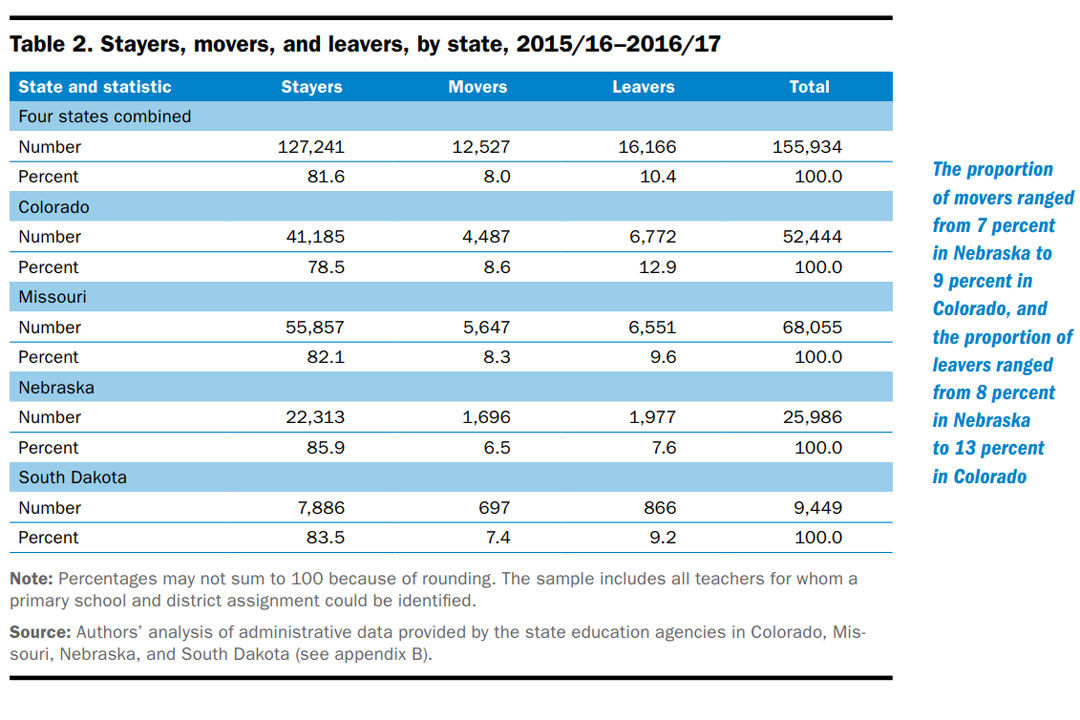REL Central recently worked with education agencies in our region to develop two reports to help provide stakeholders a better understanding of teacher movement and of predictors of teacher attrition and mobility. Now, we are hosting the webinar Understanding What Influences Teacher Mobility to discuss those reports in terms of what they mean for states, how they can be viewed as part of a larger national conversation, and how their data can be or will be used by education agencies to develop programs to improve teacher retention.
REL Central worked in partnership with the Rural Education Research Alliance and the Educator Pipeline Research Alliance to conduct a study to provide a snapshot of teacher retention, mobility, and attrition in Colorado, Missouri, Nebraska, and South Dakota. In addition, through the same study, REL Central researchers looked for insights into the factors associated with mobility and attrition, as members of the alliances look for ways to improve retention rates. The study resulted in two reports: Teacher Retention, Mobility, and Attrition in Colorado, Missouri, Nebraska, and South Dakota and Factors Related to Teacher Mobility and Attrition in Colorado, Missouri, and South Dakota.
Among those states studied, 82 percent of teachers remained in a classroom teaching position in the same school (stayers), 8 percent transferred to a classroom teaching position in a different school or district (movers), and 10 percent took a nonteaching position or left their state public school system (leavers). In addition, the study found that teachers’ movement was most likely related to age, years of experience in their schools or districts, teaching assignments, average salaries, school demographics and performance, and school state accountability designation. Findings in both reports demonstrated differences in mobility and retention rates across states studied and among locales within each state.
In the webinar, REL Central staff members Mike Siebersma and Stephen Meyer will discuss an overview of the reports as well as individual state findings. Carolyn Haug, director of research and impact at the Colorado Department of Education (CDE) and a practitioner who worked with REL Central on Colorado data for both reports, will share her experience in interpreting the reports and discuss the ways that CDE will use the data in their teacher retention planning.
To round out the discussion, Desiree Carver-Thomas, researcher and policy analyst for the Learning Policy Institute, will provide insights on how the reports’ findings fit in the national landscape of teacher retention research. Finally, webinar attendees will leave with actionable takeaways in the form of examples of research-based state and local programs and initiatives aimed at improving teacher retention.
To learn more about the study, its reports, and ways to use these reports to tackle teacher retention planning in your state, district, or school, please attend the webinar Understanding What Influences Teacher Mobility on November 15.





